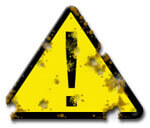Suggestions for Safely Using Neodymium Magnets.
The strength of neodymium magnets is greater than other types of magnets
Neodymium magnets are incredibly strong magnets that can be dangerous in specific circumstances. It is important to remember that neodymium magnets are extremely powerful and can attract other metal objects, which can lead to harm or destruction to the body.
If you need to work with neodymium magnets, it is important to exercise caution and follow appropriate safety measures, such as wearing protective clothing (e.g., safety goggles), avoiding working with magnets near computers or other electronic devices, and keeping magnets apart from each other to prevent them from attracting and potentially causing harm or projectiles to be ejected in the event of impact, which can endanger your vision.
Neodymium magnets are also very hard and fragile, so it is advisable to avoid strikes, throwing, or dropping magnets as they can quickly crack or split.
In conclusion, neodymium magnets are extremely strong tools that can be dangerous if not used with due caution, so it is important to observe appropriate safety measures when working with them.

If you work with magnets, you should wear safety glasses and protective gloves (when needed).
Remember to keep your magnets at least 20 cm away from sensitive electrical devices and storage media.
When holding magnets in your hands, you should remember to keep your hands at a proper distance from each other.
Neodymium magnets retain their magnetic properties for decades when properly handled and stored at room temperature.
You cannot drill or heat neodymium magnets.
Work on a metal table or alternatively on a surface such that the magnets stay there, where you put them and to not "fly" together to others.
Children should NEVER be allowed to play with neodymium magnets.
If you injure yourself and experience significant injury, seek immediate medical help.
To separate magnets, grasp the top magnet, remove it from the stack, and pull it apart swiftly.
If you want to minimize pain, it is recommended to apply ice to pinched skin. In the case of contact with larger magnets, significant swelling can occur.
Caution with Neodymium Magnets
The magnet coating is made of nickel, so be cautious if you have an allergy.
Studies show a small percentage of people have allergies to certain metals, including nickel. An allergic reaction often manifests as skin redness and rash. If you have a nickel allergy, try wearing gloves or avoid direct contact with nickel-plated neodymium magnets.
Neodymium magnets can become demagnetized at high temperatures.
While Neodymium magnets can demagnetize at high temperatures, it's important to note that the extent of this effect can vary based on factors such as the magnet's material, shape, and intended application.
It is crucial not to allow the magnets to pinch together uncontrollably or place your fingers in their path as they attract to each other.
Neodymium magnets jump and clash mutually within a radius of several to around 10 cm from each other.
Keep neodymium magnets away from children.
Neodymium magnets are not toys. You cannot allow them to become toys for children. Small magnets pose a serious choking hazard or can attract to each other in the intestines. In such cases, the only solution is to undergo surgery to remove the magnets, and otherwise, it can even lead to death.
Neodymium magnets are among the most powerful magnets on Earth. The surprising force they generate between each other can surprise you.
Read the information on our website on how to properly utilize neodymium magnets and avoid significant harm to your body and unintentional damage to the magnets.
Dust and powder from neodymium magnets are flammable.
Do not attempt to drill into neodymium magnets. Mechanical processing is also not recommended. If the magnet is crushed into fine powder or dust, it becomes highly flammable.
Neodymium magnetic are extremely fragile, leading to shattering.
In the event of a collision between two neodymium magnets, it can result in them getting chipped. They are coated with a shiny nickel plating similar to steel, but they are not as hard. At the moment of collision between the magnets, tiny sharp metal pieces can be propelled in various directions at high speed. Eye protection is recommended.
People with pacemakers are advised to avoid neodymium magnets.
Neodymium magnets generate strong magnetic fields. As a result, they interfere with the operation of a pacemaker. This happens because such devices have a function to deactivate them in a magnetic field.
Keep neodymium magnets away from TV, wallet, and computer HDD.
Neodymium magnets produce strong magnetic fields that can destroy magnetic media such as floppy disks, video tapes, HDDs, credit cards, magnetic ID cards, cassette tapes, or other devices. They can also destroy videos, televisions, CRT computer monitors. Remember not to place neodymium magnets close to these electronic devices.
Do not bring neodymium magnets close to GPS and smartphones.
Magnetic fields can interfere with compasses and magnetometers used in aviation and maritime navigation, as well as internal compasses of smartphones and GPS devices. There are neodymium magnets in every smartphone, for example, in the microphone and speakers.
Pay attention!
In order for you to know how strong neodymium magnets are and why they are so dangerous, read the article - Dangerous strong neodymium magnets.

